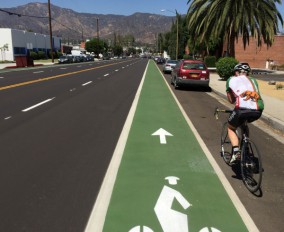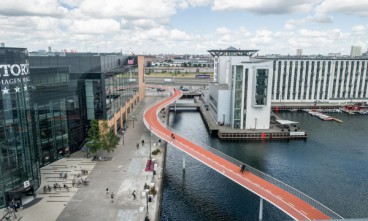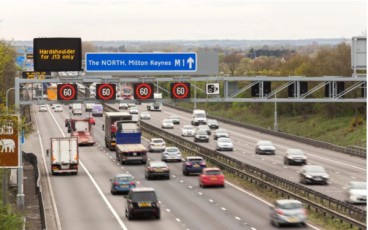Road safety increased due to cycling lanes

A detailed study shows that cycling lanes have made the roads safer for everyone.
Scientists from the University of Colorado and the University of New Mexico looked into data deriving from 12 large cities in the U.S. over the last 13 years to evaluate the safety of roads with cycling lanes. In particular, they examined 94,000 accidents, 17,000 of them caused fatalities and 84,000 severe injuries.
During the past 13 years, researchers found that there has been a 51% increase in cyclists in the U.S. cities of the research (including Dallas, Portland, Kansas City and Denver). Moreover, the number of cycling lanes is constantly doubling each year since 2009. At first, researchers suspected that road safety will increase as more cyclists are on the road and vehicle drivers would drive more carefully.
However, their findings were completely different. Evidence showed that safety did not increase due to cyclists but due to the cycling lanes that were constructed for them. What scientists found is that cyclist infrastructure is correlated with less accidents in the roads. “Bicycling seems inherently dangerous on its own. So it would seem that a city with a lot of bicycling is more dangerous, but the opposite is true. Building safe facilities for cyclists turned out to be one of the biggest factors in road safety for everyone,” Wesley Marshall, PhD, PE, assistant professor in the College of Engineering, Design and Computing and co-author of the study, stated.
According to researchers, cycling lanes slow the traffic and act as a “calming” mechanism in the city streets. Fatal road incidents have been reduced over the past years by 75%, 60.6%, 49.3%, 40.3% and 38.2% in Portland, Seattle, San Francisco, Denver and Chicago, respectively.
The study suggests that the critical parameter to evaluate the roadway's safety is the fatality rate, not minor collisions. “Over the years, my research has found that safer cities have fewer fatalities but more fender benders,” Mr. Marshall stated.
Finally, the development of urban environment also affects the roads' safety and future research should focus on how neighborhoods and local road infrastructure impacts the rate of severe accidents within a region.
Source: University of Colorado
Source: University of Colorado
Want to read more like this story?

From Setback to Progress: The Future of UK Road Safety
Sep, 19, 2024 | NewsThe United Kingdom, once a global leader in road safety, has seen its progress stagnate over the pa...

Investigation on the effect of bike lanes on urban roads
Feb, 19, 2019 | NewsA new research focuses on manipulating data to assume the best locations to install bike lanes in ci...

Challenges for sustainable road networks in UK
Jan, 10, 2021 | NewsPreserving road networks is a challenging and abiding task that requires both short-term and lo...

Impact of roadway infrastructure on human life risk
Oct, 25, 2019 | NewsA new study, published in Journal Accident Analysis & Prevention, focuses on the impact of roadw...

Using biometric data to make urban infrastructure safer
Jul, 25, 2021 | NewsA new study focuses on utilizing biometric data to evaluate urban infrastructure safety and prevent...

Smart technology in road infrastructure
Nov, 25, 2019 | NewsA new project, currently conducted in the United Kingdom, aims to produce energy from traffic, compl...

UK plans to improve smart roadways
Mar, 12, 2020 | NewsThe government of the United Kingdom has announced a new endeavor aiming to improve safety on public...

Climate change brings new challenges in road surfaces
Jul, 24, 2019 | NewsAccording to a new study, the thickness of asphalt layers should increase by 7% to 32% in order...

Paving the way to the future
Feb, 17, 2016 | NewsFrance is the first country to install solar panels onto 1000km of public roads The French govern...
Trending

Vertical gardens in Mexico City to combat pollution

Saudi Park Closed After 360 Big Pendulum Ride Crashes to Ground, 23 injured

Characteristics of Load Bearing Masonry Construction

Taipei 101’s impressive tuned mass damper

Dutch greenhouses have revolutionized modern farming

Federal court rules Biden’s offshore drilling ban unlawful


